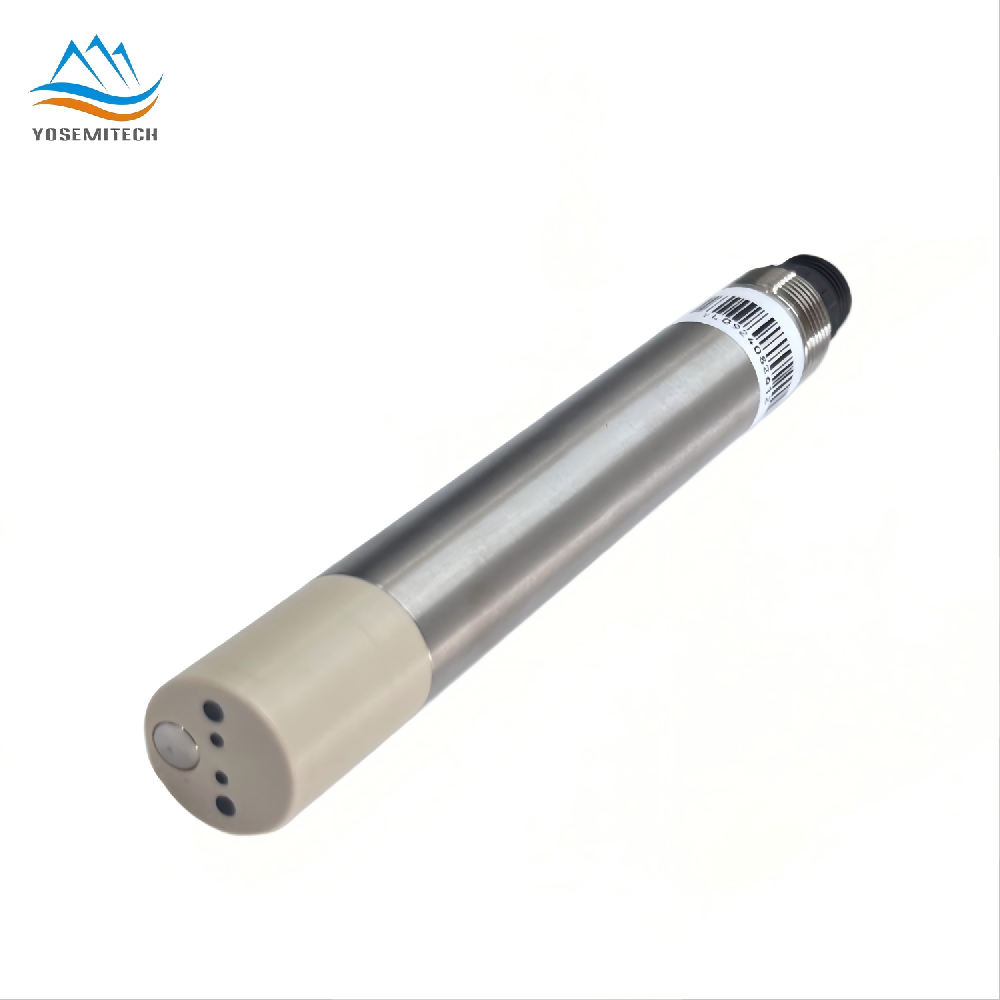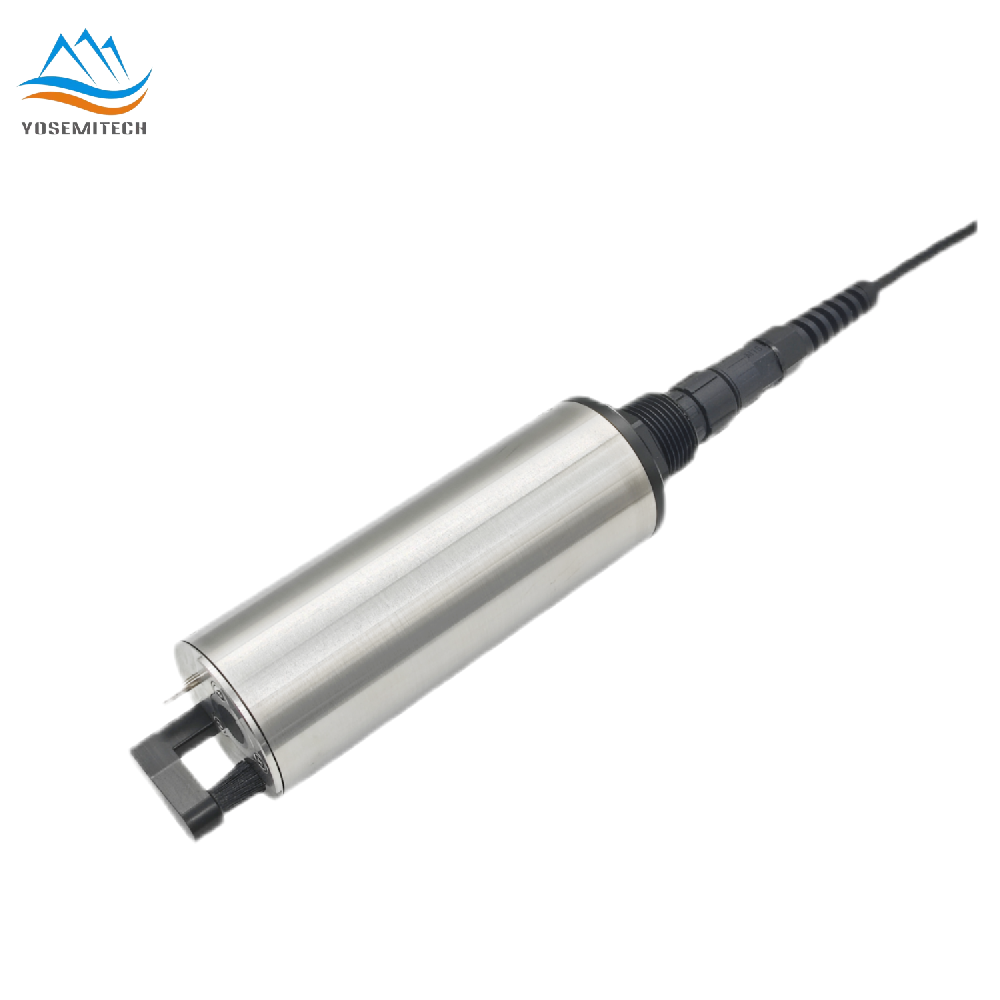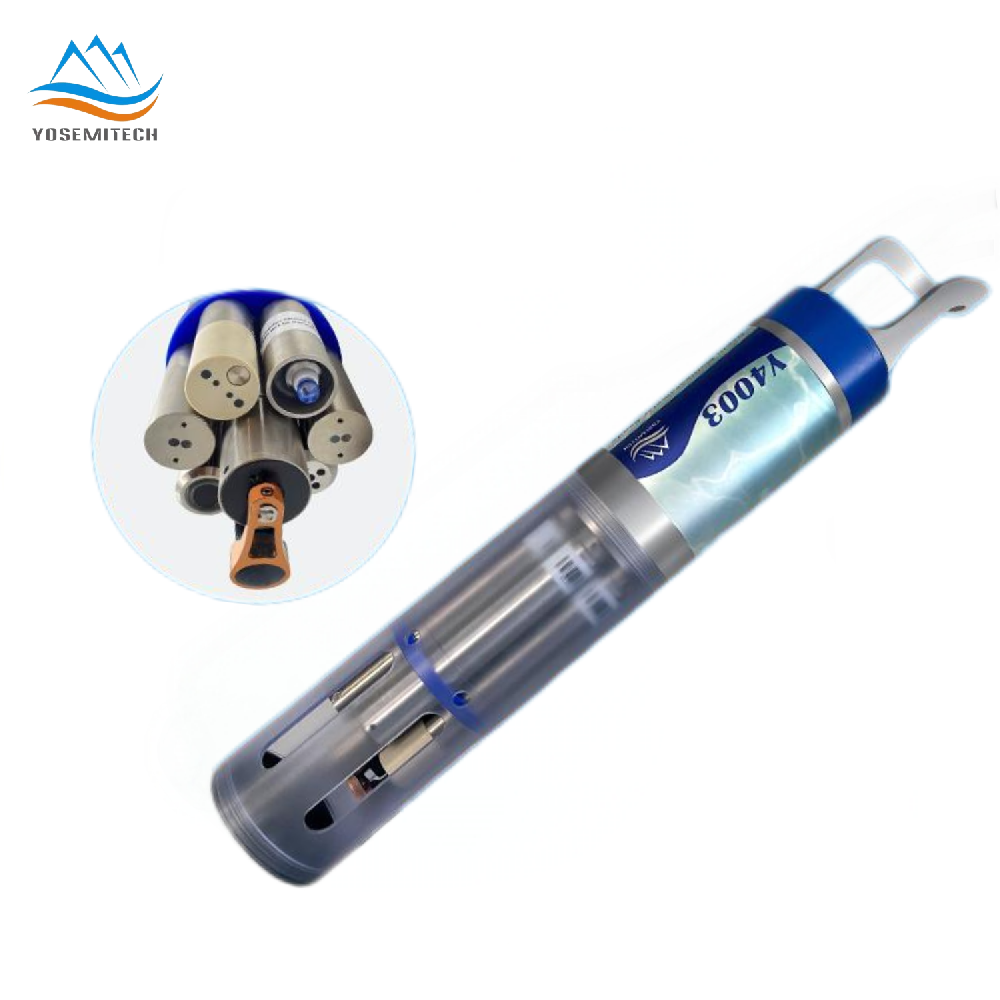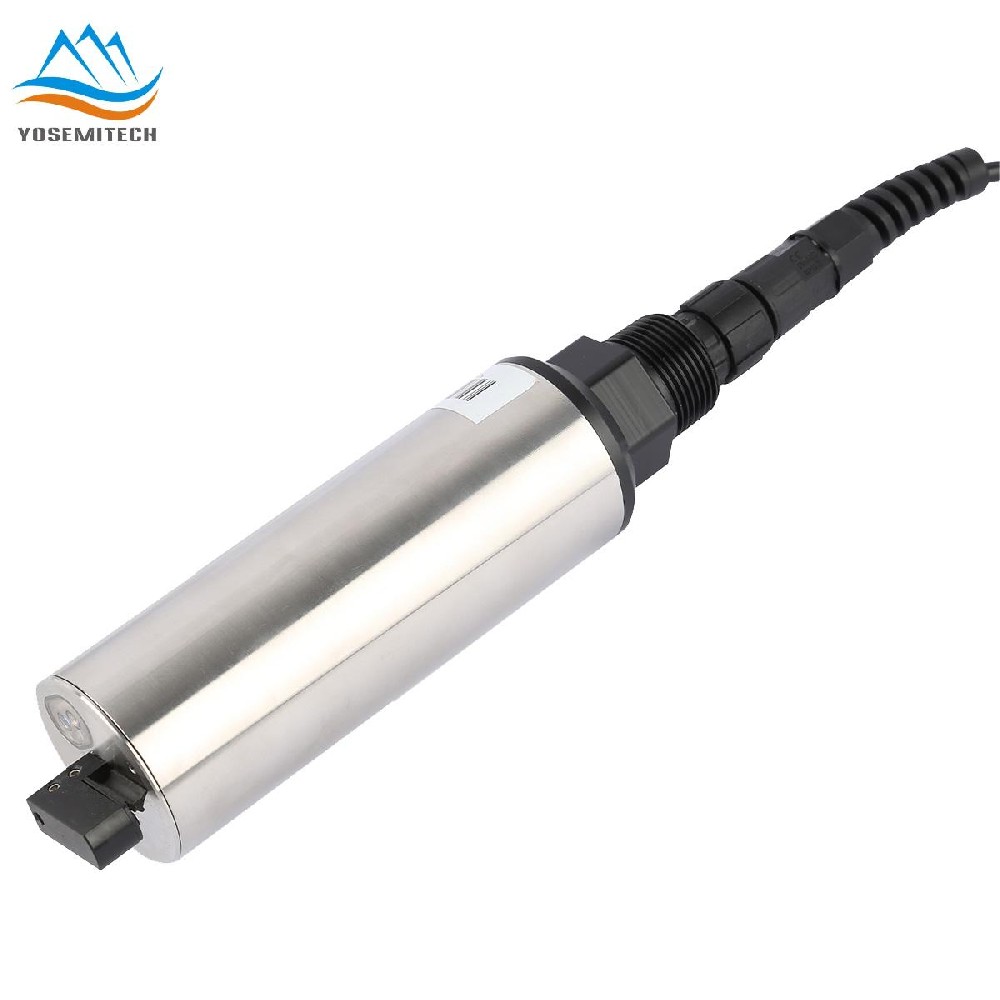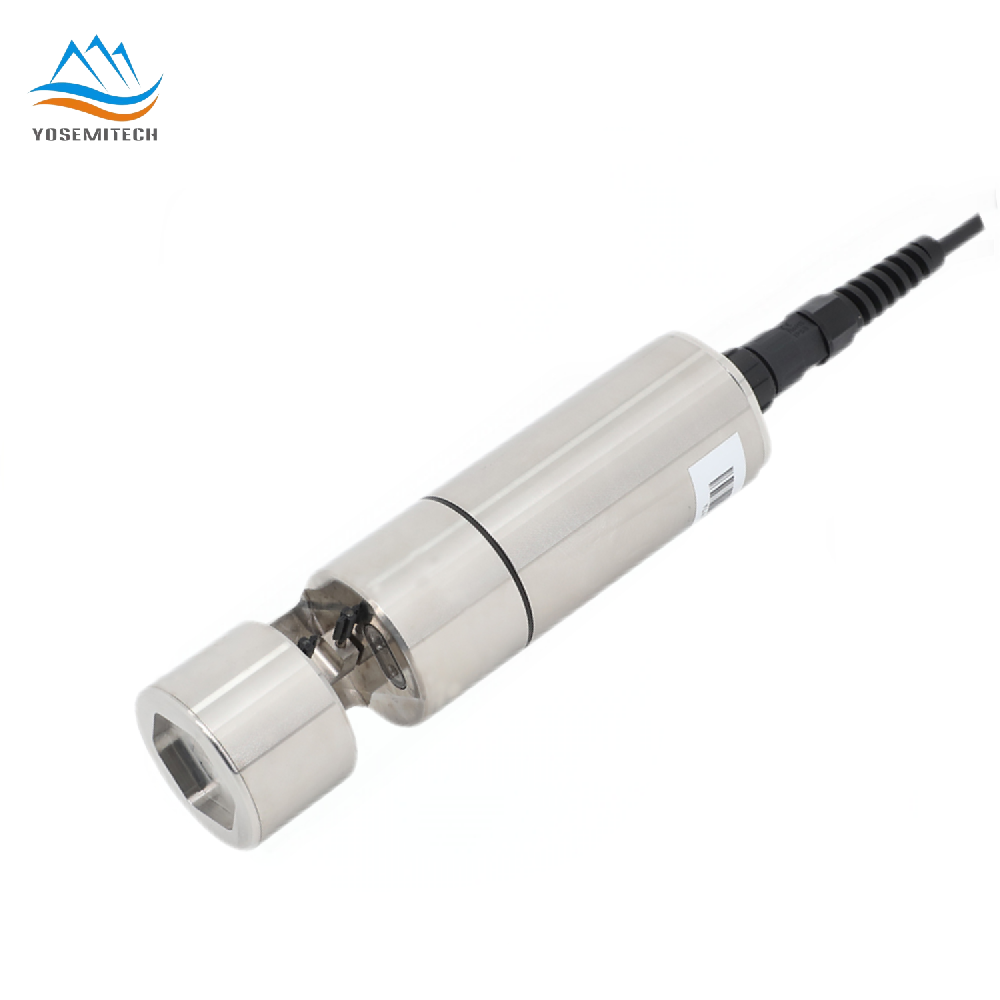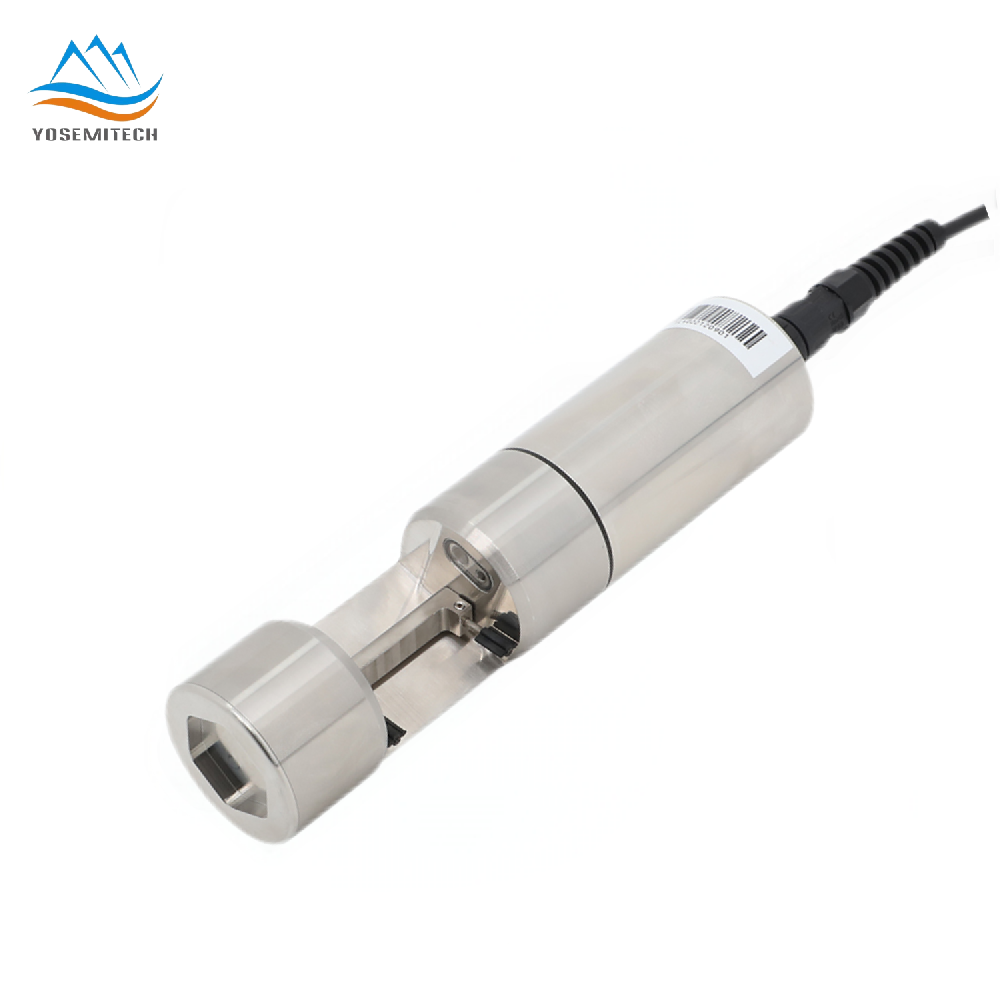Company news
Y560-A NH4-N ammonia sensor calibration
Writer: admin Time:2023-10-18 09:51:33 Browse:1339℃
Required equipments and raw materials
10mg/L calibration standard、100mg/L calibration standard、Cable、USB converter、Power adapter、Snorkel、ISA ion activator、10ml volumetric cylinder

NH4-N ammonia sensor supports 1-point and 2-points calibration

One-point calibration step for ammonium ion electrode (change K value)
 Step 1: put an appropriate amount of 10mg/L ammonium ion electrode standard solution into a 250mL beaker, add an ionic regulator solution in the corresponding proportion (2% of the total amount of solution);
Step 1: put an appropriate amount of 10mg/L ammonium ion electrode standard solution into a 250mL beaker, add an ionic regulator solution in the corresponding proportion (2% of the total amount of solution);
Step 2: connect the cable to the sensor, remove the sensor protective cover, remove the protective sleeves of the ammonium ion electrode, pH electrode and reference electrode, and then install the sensor protective cover. Put it into the beaker containing 10mg/L ammonium ion electrode standard solution, and insert the RS485 to USB connector connected to the sensor cable into the computer;
Step 3: open the SmartPC software on the computer, click “Language” and select “Chinese”, drop down “Port” and select the corresponding COM port, and then click “Connect”, after connecting the sensor successfully, click “Measure”. Under the “NH4-N” interface, click “Brush”, and click “Turn On Brush” under the “Wiper” interface to remove the bubbles on the test window. Then click “Start” to get the real-time measurement of the pH、NH4+、NH4-N and temperature;
Step 4: click “Stop” to end the data measuring, then click “Calibrate”, and click “Get” under the “Manual Calibration” interface to get the initial K and B values of the sensor. Under the “Automatic Calibration” interface, change the “Single/First Point Calibration Value” to 10, click “1 points” to do one-point calibration, wait for the values in the pop-up window to stabilize, and click “OK” to complete the calibration. Click “Get” to check whether the K value is written correctly;
Step 5: click “Start” under the “NH4-N” interface to get the real-time measurement of the pH、NH4+、NH4-N and temperature, check that the NH4+ is close to 10mg/L to verify that the one-point calibration is successful.
Two-points calibration step for ammonium ion electrode (change K value)
 Step 1: put an appropriate amount of 10mg/L ammonium ion electrode standard solution into a 250mL beaker, add an ionic regulator solution in the corresponding proportion (2% of the total amount of solution). Put an appropriate amount of 100mg/L ammonium ion electrode standard solution into a 250mL beaker, add an ionic regulator solution in the corresponding proportion (2% of the total amount of solution);
Step 1: put an appropriate amount of 10mg/L ammonium ion electrode standard solution into a 250mL beaker, add an ionic regulator solution in the corresponding proportion (2% of the total amount of solution). Put an appropriate amount of 100mg/L ammonium ion electrode standard solution into a 250mL beaker, add an ionic regulator solution in the corresponding proportion (2% of the total amount of solution);
Step 2: connect the cable to the sensor, remove the sensor protective cover, remove the protective sleeves of the ammonium ion electrode, pH electrode and reference electrode, and then install the sensor protective cover. Put it into the beaker containing 10mg/L ammonium ion electrode standard solution, and insert the RS485 to USB connector connected to the sensor cable into the computer;
Step 3: open the SmartPC software on the computer, click “Language” and select “Chinese”, drop down “Port” and select the corresponding COM port, and then click “Connect”, after connecting the sensor successfully, click “Measure”. Under the “NH4-N” interface, click “Brush”, and click “Turn On Brush” under the “Wiper” interface to remove the bubbles on the test window. Then click “Start” to get the real-time measurement of the pH、NH4+、NH4-N and temperature;
Step 4: click “Stop” to end the data measuring, then click “Calibrate”, and click “Get” under the “Manual Calibration” interface to get the initial K and B values of the sensor. Under the “Automatic Calibration” interface, change the “Single/First Point Calibration Value” to 10, change the “Second Point Calibration Value” to 100, click “2 points” to do two-points calibration, wait for the values in the pop-up window to stabilize, and click “OK”. Then clean the sensor with distilled water or deionized water, wipe it dry and put it into the beaker containing 100mg/L ammonium ion electrode standard solution, wait for the values in the pop-up window to stabilize, and click “OK” to complete the calibration. Click “Get” to check whether the K and B values are written correctly;
Step 5: click “Start” under the “NH4-N” interface to get the real-time measurement of the pH、NH4+、NH4-N and temperature, check that the NH4+ is close to 100mg/L, then clean the sensor with distilled water or deionized water, wipe it dry and put it into the beaker containing 10mg/L ammonium ion electrode standard solution, check that the NH4+ is close to 10mg/L to verify that the two-points calibration is successful.
CATEGORIES
CONTACT US
Yosemitech Technologies Co., Ltd
 +86 19984844080
+86 19984844080
 sales@yosemitech.com
sales@yosemitech.com
 Bldg,25,CECEP Industrial Park, No. 18 Dongchang Rd. Suzhou Industrial Park, Jiangsu Province,China 215126, China
Bldg,25,CECEP Industrial Park, No. 18 Dongchang Rd. Suzhou Industrial Park, Jiangsu Province,China 215126, China
